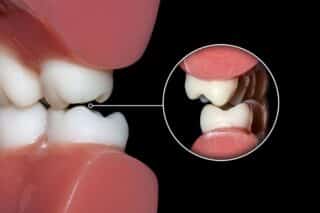
More Dental Health Articles
Occlusal Adjustments and Their Role in Preventing Periodontal Disease

Periodontal disease, commonly known as gum disease, is a prevalent oral health condition that affects millions of people worldwide. It involves inflammation and infection of the gums, which, if left untreated, can lead to serious complications such as tooth loss and systemic health issues. While regular oral hygiene practices like brushing, flossing, and dental visits are essential in preventing periodontal disease, occlusal adjustments can also play a crucial role in maintaining healthy gums.
Understanding Occlusal Adjustments
Occlusal adjustments involve minor modifications to the way teeth come together when the jaws close. When there is malocclusion (a misalignment of the upper and lower teeth), it can lead to excessive force on certain teeth during biting and chewing, causing trauma to the supporting structures of the affected teeth. This trauma can contribute to the development and progression of periodontal disease.
The Link Between Occlusion and Periodontal Disease
Malocclusion can create localized areas of stress on the gums and the bone supporting the teeth. These areas are more susceptible to bacterial accumulation and can become challenging to clean properly, even with diligent oral hygiene practices. Over time, this accumulation of bacteria can lead to gum inflammation, gum recession, and the formation of periodontal pockets. If these pockets are left untreated, they can harbor more bacteria and worsen the condition, potentially leading to tooth mobility and eventual tooth loss.
How Occlusal Adjustments Help
By making precise adjustments to the occlusion, the forces exerted on the teeth can be distributed more evenly during biting and chewing. This redistribution of forces reduces the localized stress on specific areas of the gums and bone, decreasing the risk of gum trauma and inflammation. As a result, occlusal adjustments can aid in preventing the progression of periodontal disease and help maintain better long-term oral health.
The process begins with a comprehensive examination of the patient’s occlusion, using various diagnostic tools like articulating paper and bite analysis. Your dentist identifies areas of premature contacts and malocclusion that require adjustment.
The actual adjustments are made by selectively grinding down specific areas of the teeth or using dental restorations to improve the alignment. The goal is to create a harmonious and stable bite that minimizes excessive forces on the teeth and surrounding structures.
Other Articles You May Find of Interest...
- Fun and Effective Ways to Teach Kids About Cavities and Oral Hygiene
- ALF (Advanced Light Force) Therapy: A Unique and Sophisticated Approach To Orthodontics and Wellness
- Tongue-Ties and Frenectomies
- Unlocking Better Sleep:The Benefits of Dental Sleep Appliances Over CPAP
- Appliances Are In Now: How To Manage TMJ Disorder
- Why The Tooth Fairy Is Very Fun – and Important!
- Let’s Smile Dental’s 7&Up Club

















